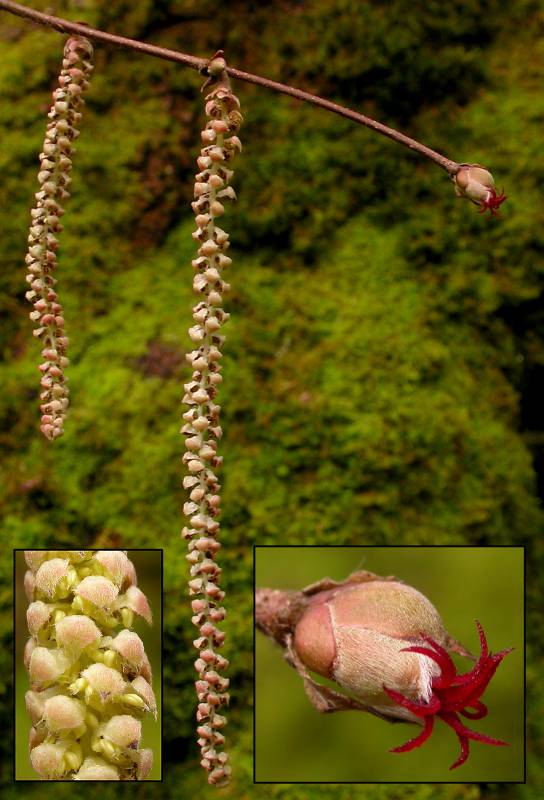Corylus cornuta
Corylus cornuta ssp. cornuta
beaked hazelnut
beaked hazelnut
5-10 mm long petioles with 4-10 cm long blades;
base of blade flat or somewhat heart-shaped; leaf margins doubly serrate;
tip of blades coming to a point gradually or abruptly.
All plants have separate male (staminate) and female (pistillate) flowers. Male flowers are arranged sprirally along a pendulous (dangling) catkin; female flowers enclosed in bracts at the tip of the twigs with only the red stigmas visible.
1.5 cm. long, hard-shelled nut enclosed within a prickly-haired tube formed by the involucre (cluster of bracts) originating at the nut base.
The nuts are often harvested shortly after ripening by squirrels and other cache-forming animals.
Corylus cornuta
Corylus cornuta ssp. cornuta
- Local floras:
BC,
OR,
WA
- Local Web sites:
Flora NW,
PNW Herbaria
WildflowerSearch
iNaturalist (observations)
USDA Plants Database
- LBJ Wildflower Center
- SEINet
- Plants of the World Online
- Encyclopedia of Life
- Wikipedia
- Google Image Search


